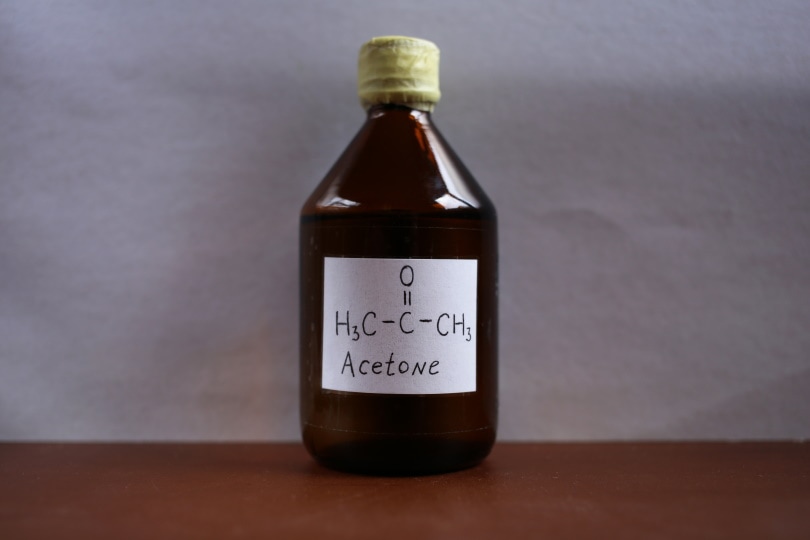How to Dispose of Acetone (6 Expert Tips)
-
Jana Blagojevic
- Last updated:

Acetone is a colorless and highly flammable liquid with a characteristic odor. It can mostly be found in beauty products such as nail polish removers, in artistic products such as paint or varnish, and for making lacquers for furniture or cars. If you want to get rid of acetone safely for you, the people around you, and the environment, read the article below.
The 6 Tips on How to Dispose of Acetone
1. Pour in an Absorbent Material
One of the best techniques for disposing of acetone is using an absorbent material, where you can safely pour all your excess acetone. Materials commonly used in gardening, such as vermiculite, sand, or even kitty litter, can help you absorb large quantities of acetone.
Place your absorbent material of choice in a sealable container, add the acetone, and close the lid tight. Keep the lid sealed until the material soaks up all the acetone in the container. You can dispose of this container by following all your local regulations.

2. Through a Hazardous Waste Center
Most countries around the United States have already developed functional and practical systems for safely getting rid of acetone and other chemicals. Many countries have a hazardous waste center where you can take all your leftover acetone to deal with appropriately.
Ask your local municipality about a hazardous waste center; if there is one, take all your acetone to the center. This is ideal if you’re dealing with large quantities of acetone that you cannot dispose of in household conditions.
3. Avoid Pouring Acetone Down the Drain
One crucial tip to remember when handling acetone is never to pour it down the drain or sink. While acetone may dissolve any clogs in your pipes, it is a strong chemical that can also dissolve plastic and some synthetics, making it extremely risky for your PVC pipes.
Pouring acetone or other chemicals down the drain causes a considerable risk of polluting the water and poisoning wildlife. The water can also poison the soil, harming your crops and those who consume them.

4. Use Hazardous Waste Bins
Several industries often use acetone in their line of work, especially rags or cloths soaked with acetone. University labs, art studios, or schools tend to use this for various projects, and knowing how to dispose of them properly can be a mystery for some.
Since acetone is highly flammable, dealing with rags soaked in it must be done with caution. Place all of the rags in a sealed container filled with water. Contact the university to arrange a pickup or transport them by yourself. You can also dry the rags in a well-ventilated area and transport them in a fireproof bag.
5. Reuse Acetone
Acetone can be safely reused for cleaning and dissolving paint, adhesives, and other materials. It is a powerful solvent that needs to be kept in sealed containers at all times. It can be reused as long as it’s not mixed or contaminated by other chemicals. Before you reuse acetone, there is a process it needs to go through called distillation. The acetone has to be distilled, and then filtered to remove any impurities or contaminants.

6. Smaller Amounts Can Go in the Garbage Bin
If you are only looking to get rid of small amounts of acetone, you can dispose of it without any special methods or preventive measures. For this project, you’ll only need cotton balls and a sealed metal container. Pour the small amounts of acetone on cotton balls, just enough to get them damp, not soggy.
Place the cotton balls inside the metal container, and let them evaporate. Then, move the container outside to prevent any fumes from spreading through your home. After the cotton balls dry up, put the lid on the metal container, seal it, place it in a plastic bag, and throw it in the garbage.
 Conclusion
Conclusion
Acetone is a strong solvent with highly flammable properties, so it is crucial to find a suitable way to dispose of it. This article explains the most effective and easy ways to dispose of large quantities of acetone without worrying about the risks and consequences. Remember never to flush acetone down the drain or toilet.
Featured Image Credit: Ihor Matsiievskyi, Shutterstock
Contents
